Some weeks ago, reader WilliamB messaged me with a bread problem (from a Bernard Clayton brioche recipe).
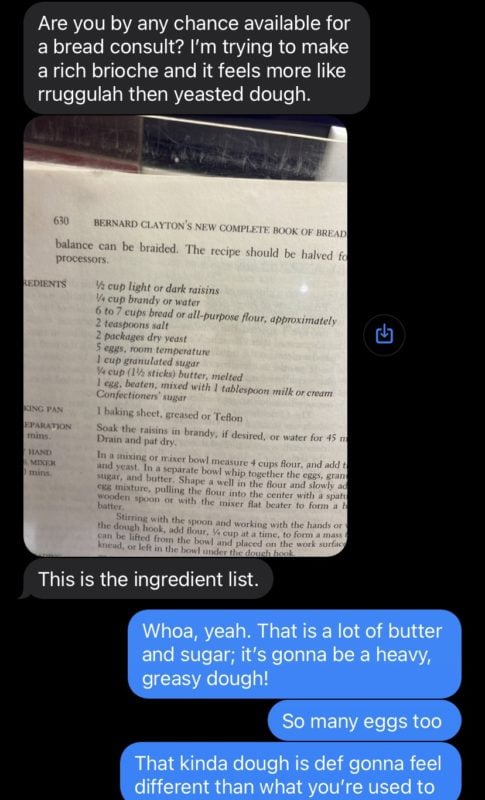
I did my best to help, and we had a pretty extensive conversation with many photo updates about how the bread rescue was going.
WilliamB suggested that this might make a fun blog post, so today I’m collating my collection of words and photos from the conversation!
The initial problem is that the dough did not rise at all. I am unsurprised by this, because in Clayton’s recipe, the eggs and butter are mixed straight into the dry yeast/flour mixture.
I presume that this results in the yeast granules getting coated in a layer of grease, which makes them unable to dissolve and grow.

WilliamB looked up some other brioche recipes and most of those involved making a soft dough or sponge first, and THEN mixing in all the heavy eggs and yeast. That probably works way better. What the heck, Mr. Clayton??
Given that the dough involved a lot of butter and eggs, it was worth some rescue effort. Butter and eggs ain’t cheap these days!
I remembered a time, years ago, when I made a batch of roll dough and it didn’t rise at all. In that instance, the problem was that I’d completely forgotten to add the yeast.
WHOOPS.
In our text convo, I shared that in order to remedy the problem, I’d made a tiny batch of soft dough with the full amount of yeast added, and then I’d kneaded it into my unyeasted dough.
I let the newly yeasted dough rise again, proceeded with the recipe, and all was well.
So, I suggested that WilliamB try something similar.
It was tough going at first.

A little better now:

WilliamB let the dough sit for a little while, and then did more working-in by hand.

You can see the lumps of the old unrisen dough in there.

After another 15-minute rest, the dough lumps were a little softer.

And then the Kitchen-Aid came in handy.
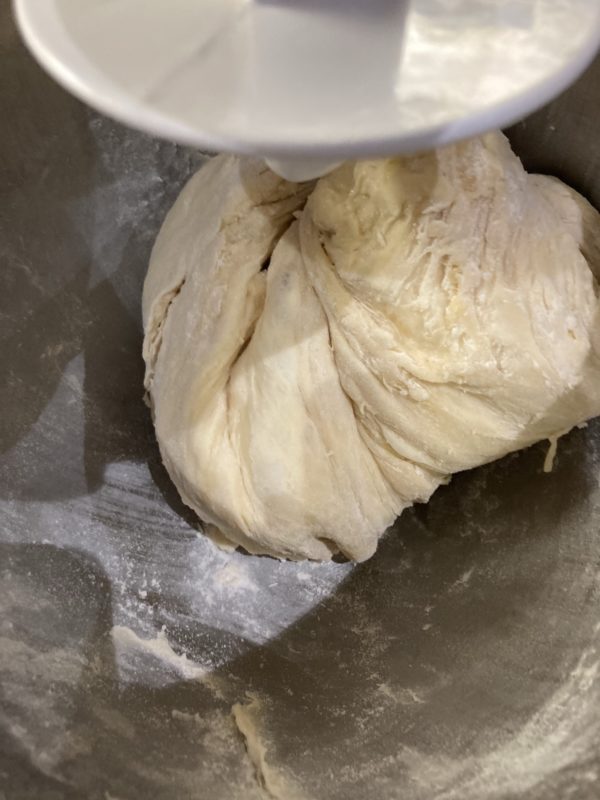
WilliamB said, “This looks auspicious.” and I agreed.
Time for an official rise.

WilliamB opted for a braid with this dough:

And in a move understood by many of us here, the covering of choice was a torn produce bag, even though many bread recipes suggest using a fresh piece of plastic wrap!
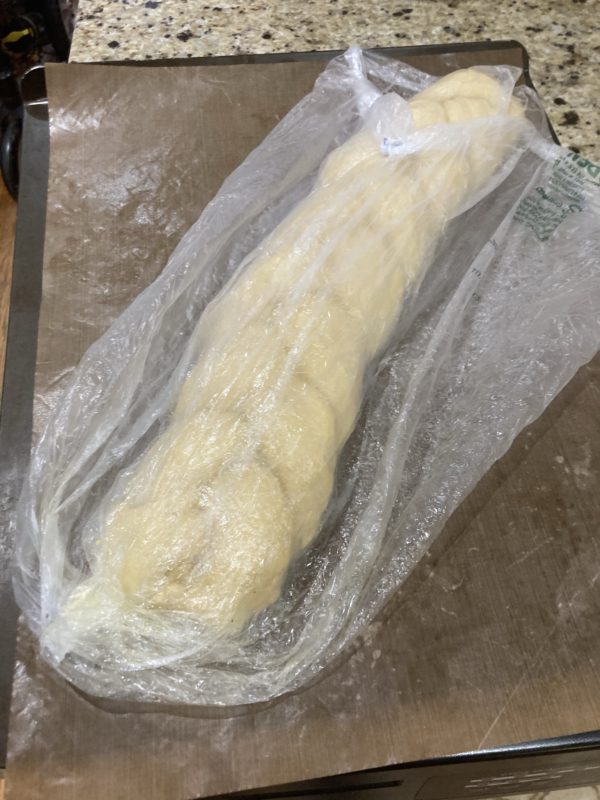
Time to bake!

And here’s the finished product.

Here’s what the inside turned out like. This picture makes me hungry!
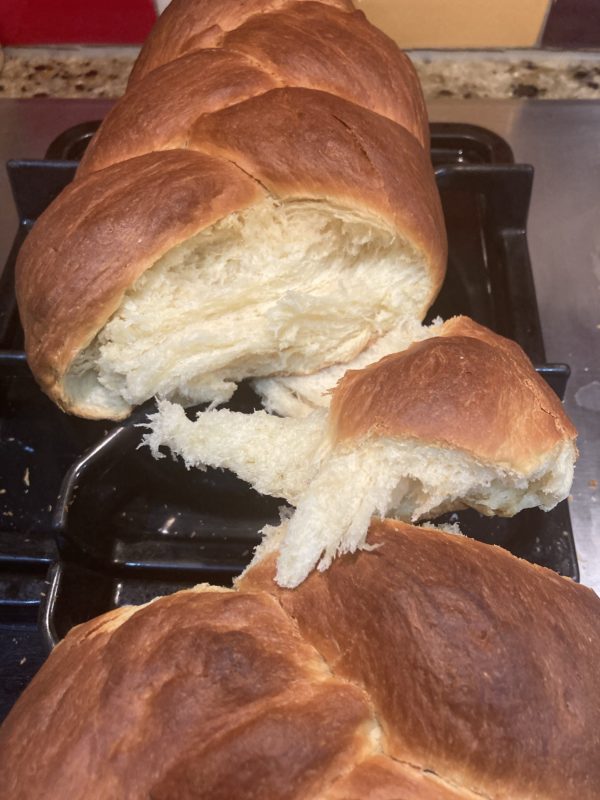
The verdict from WilliamB: a bit bland, but mostly a success.
Now, this batch of rescued dough was actually the second failed brioche dough (!!!)
But, cheered by the first rescue, WilliamB attempted a rescue of the other batch.
This one was stiff enough that it needed to be chopped.
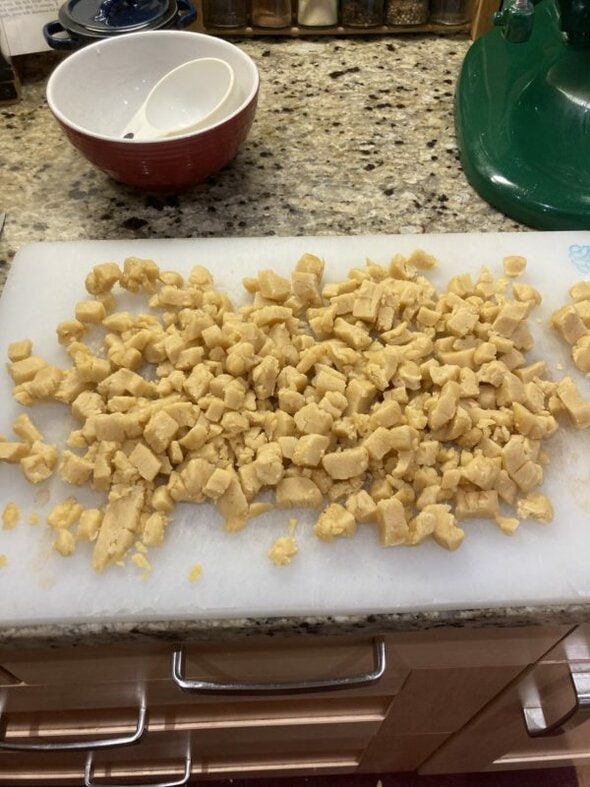
This is the hardest bread dough I have ever seen!
In the midst of the remixing attempt:
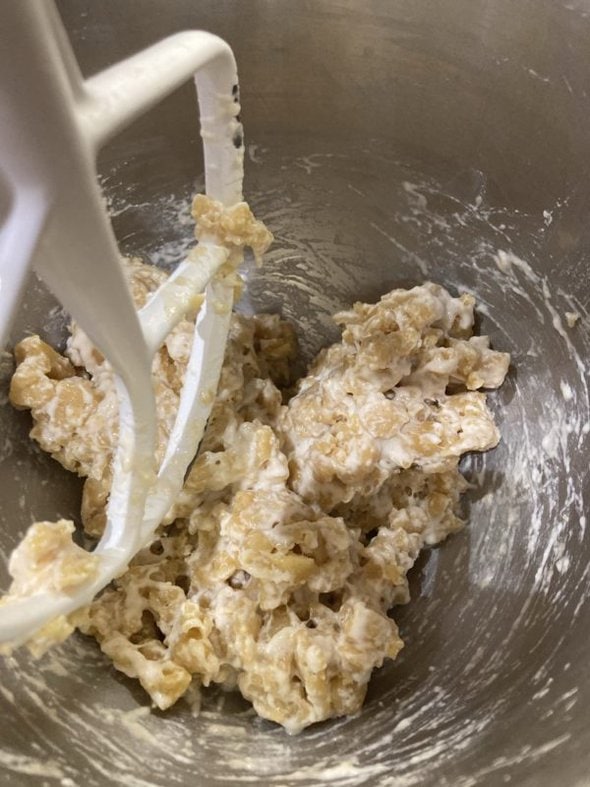
Amazingly, the dough ended up like this:

And after a successful rise, it got shaped into a loaf.
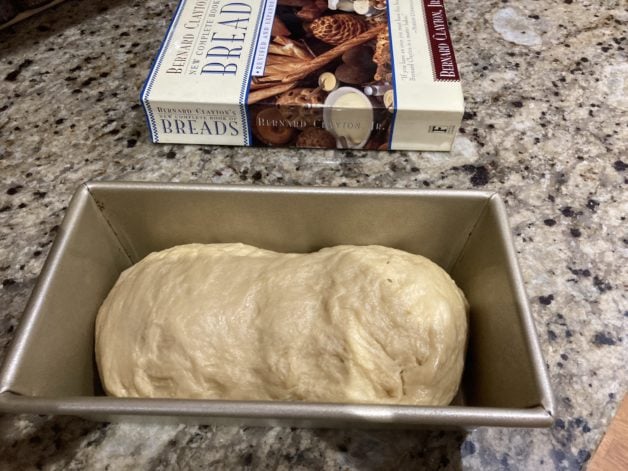
Here’s how it looked once it was baked.

A picture of the inside:
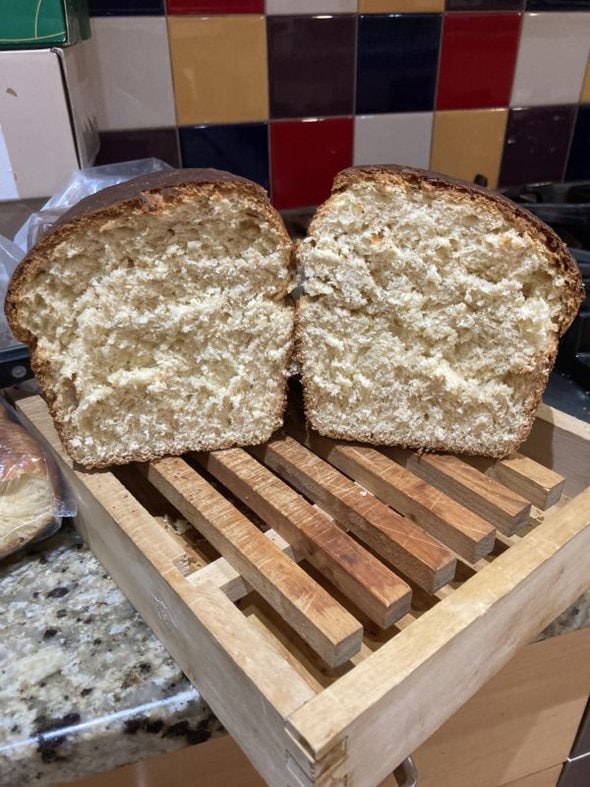
WilliamB’s review: a good texture and a better flavor than the braided loaf.
So overall, I (Kristen) think this was quite a successful bread rescue! The ingredients used for the rescue were very cheap, and they resulted in a save that kept a buttery, eggy dough out of the trash.
In a case like this, I think an experimental rescue is really worth a try, as long as you have the time. The worst that could have happened is that WilliamB would have wasted a bit of flour and yeast.
And what DID happen is the best-case scenario: the dough was turned into something very edible.
This is exactly the thinking behind my post “Will it work? Try it and see!”
When you have a low-stakes situation (WilliamB couldn’t have really made this dough worse than it was!), experimentation is usually a really good choice.
So. There you have it: a pictorial tour through a real-life bread rescue. 🙂
Thank you, WilliamB!
P.S. WilliamB was in a previous Meet a Reader feature; click here to read it.

deanna
Friday 10th of March 2023
Wow! I was just so impressed that WilliamB’s oven was so clean. Wish mine looked that good. I have a self-cleaning oven but the one time I used it, it blew the fuse when I turned the microwave on at the same time. We had to have the repairman out, so I’ve never run the self-clean option again! Good job on the bread save!
Mimi-In-the-Mountains
Friday 10th of March 2023
This was such a delight to read - and thank you for the extra recipes in the comments!
Millicent
Friday 10th of March 2023
Kristen: One of the only breads I buy rather than baking myself (these days) is a brioche that my husband craves. After reading this rescue bread post and learning A LOT, I was wondering if you had a brioche recipe that you would recommend (preferably a dough that rises! LOL) Cause I have never even tried to make brioche!
WilliamB
Tuesday 14th of March 2023
@Millicent, the key thing I learned for brioche is to make the butter-less batter first, then add _softened_ (not melted) butter afterward. There are a number of good YouTubes showing this. Most of them are in French but the videos are clear anyway.
Kristen
Friday 10th of March 2023
I have used the recipe from America's Test Kitchen before! https://www.kcet.org/food-discovery/food/weekend-recipe-no-knead-brioche
Jan
Wednesday 8th of March 2023
Good job rescuing the dough!
I make my own mayo with an immersion blender. Especially at first I had failures when it just wouldn't emulsify. I don't know why because I make it often now, and I never bother with all the tips like "eggs must be room temperature". I take the eggs straight out of the fridge, add the other ingredients, and works 99% of the time. But in the beginning . . .a whole cup of avocado oil--YIKES, not so frugal! There are ways to still turn this into a salad dressing to at least "rescue" it. I've also learned to add some whey from yogurt and let it sit out on the counter to ferment--that ways the homemade mayo doesn't go bad in 4-5 days, because it's hard to use up in a short period of time unless I'm making potato salad for a crowd!
CINDY BRICK
Wednesday 8th of March 2023
William B et al, I use Mavis' Dutch Oven Bread over and over and over. (She writes at https://www.onehundreddollarsamonth.com/ )
2 cups flour (heaping if you live at higher altitude) 2 cups water 1 tsp yeast a sprinkle of salt
That's it. Mix together (add a little more water, if needed) for a clumpy dough, then cover and let rise for 8-18 hours. (No kneading or any other effort needed. Takes about 5 min.)
Heat your oven to 450. Grease the bottom of a Dutch oven, and put in to heat about 15 min. Dump the dough in, cover, and bake for 30 min. Take the cover off and bake for 10 min. more. Dump the loaf out and let cool.
This round loaf makes the nicest 'crumb, ' excellent sandwiches and toast. Mavis has all sorts of variations, including raisin...but I just go back to the main recipe.
P.S. I've added oatmeal with a little extra water, with success. My bet: you could use your leftover breakfast oatmeal mixed in.
CrunchyCake
Tuesday 18th of April 2023
@CINDY BRICK, I tried this and it didn't work at all for me. Other recipes I've tried (and I think including the one in the link you provided) use 3 cups of flour to 1.5 cups warm water, so a 1:1 ratio yielded a runny, too wet dough. Does the 2 cups of flour work for you?